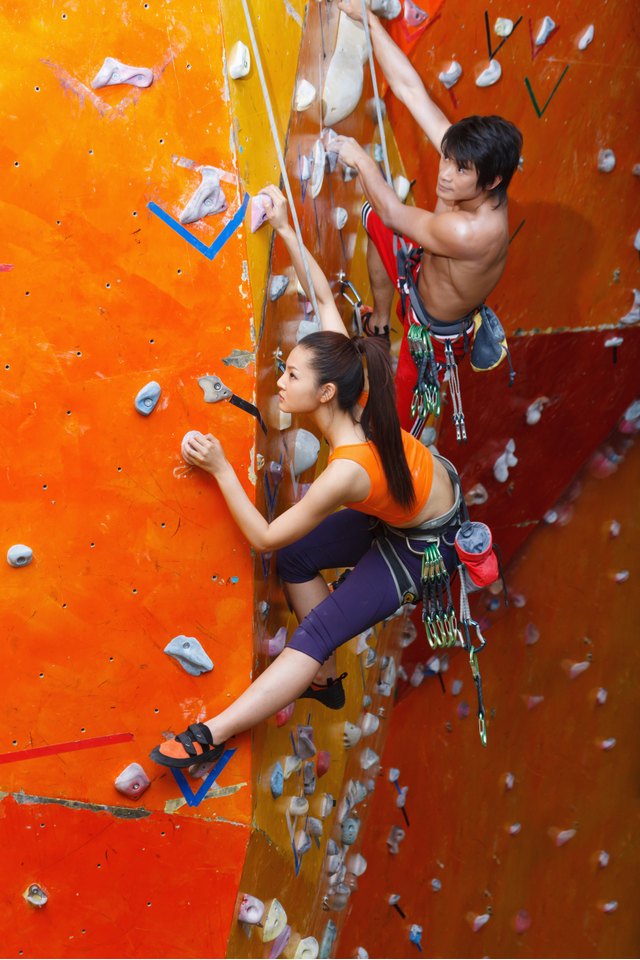Blisters From Indoor Rock Climbing

Indoor rock climbing, although fun and challenging, can result in blisters, especially on your hands. Rock climbing blisters are no different from any other kind of blisters and most can simply be left to heal on their own. Treat your blisters correctly and they won't keep you on the ground for long.
Indoor Rock Climbing
Indoor rock climbing engages your entire body and requires balance, flexibility and strength. It also calls for ingenuity and decision-making skills because you must plan a route up the wall. It's not like simply climbing a fancy ladder. Using different routes each time and trying to vary the angles of your hand- and foot-holds can help prevent blisters.
Blister Causes
Blisters are caused when friction occurs on the same spot over a period of time. This can happen anywhere on your body, but blisters are most common on your hands and feet. Fluid builds up between the top layers of your skin, resulting in a raised bubble that can be painful. Most friction blisters will heal by themselves if left alone.
Treating Blisters
Blisters the size of a nickel or smaller can be left alone to heal. Put a self-adhesive bandage over them to keep them from becoming worse. Large blisters can be punctured and drained if you are careful to follow proper disinfecting procedures.
Draining Blisters
Swab the surface of the blister and the skin surrounding it with isopropyl alcohol. Soak a needle in alcohol for 30 to 45 seconds and then hold the tip in the blue part of a lighter flame for another 30 to 45 seconds. Poke into your skin only the part of the needle that has been in the flame. Gently squeeze the blister until it drains. Swab the area again and cover the blister with a clean bandage.
Warning
Never pop a blister without sterilizing the needle and cleaning the area around the blister before and after puncturing it. Otherwise, you risk infection. If the area around your blister is red and/or inflamed, or the fluid inside is cloudy or opaque, do not attempt to treat it yourself. See a health care professional so that you don't risk making it worse or infect the entire area.
References
- IndoorClimbing.com: The Sport of Indoor Rock Climbing
- NYU Langone Medical Center: Blisters
- Shashikumar B, Reddy RR, Harish M. Oral hemorrhagic blister: an enigma. Indian J Dermatol. 2013;58(5):407. doi:10.4103/0019-5154.117337
- Worthing RM, Percy RL, Joslin JD. Prevention of Friction Blisters in Outdoor Pursuits: A Systematic Review. Wilderness Environ Med. 2017;28(2):139-149. doi:10.1016/j.wem.2017.03.007
- Harvard Health Publishing, Harvard Medical School. Frostbite 404 404.
- Institute For Preventive Foot Health. Causes of Blisters.
- PathologyOutlines.com. Skin - nontumor, Blistering disorders, Blood blister.
- U.S. National Library of Medicine, Medline Plus. Blisters.
Writer Bio
Emmy-award nominated screenwriter Brynne Chandler is a single mother of three who divides her time between professional research and varied cooking, fitness and home & gardening enterprises. A running enthusiast who regularly participates in San Francisco's Bay to Breakers run, Chandler works as an independent caterer, preparing healthy, nutritious meals for Phoenix area residents.
